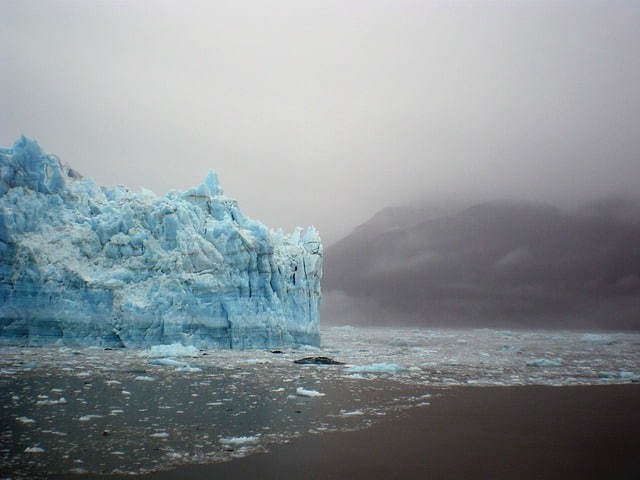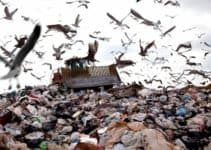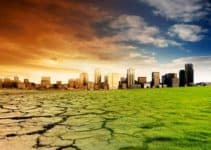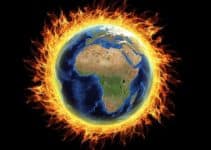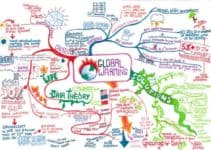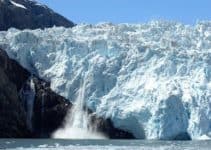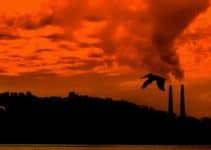A glacier is a big chunk of ice that is created from falling and accumulated snow over a period of time. They get created in areas where the temperatures are exceedingly low; these include areas that are at sea level and mostly in high altitude areas like the mountain tops. Due to heat changes, especially to relatively high temperatures, the Glacier melting occurs – a process where the ice changes from solid to liquid or water.
In the recent past, scientists have discovered an alarming rate of glacier melting. And even though glaciers are reported to be the source of the fresh water available in the world, the concern is the current rate at which the melting ice is pouring into the sea. This intense melting of glaciers is producing a big ripple effect like extreme flooding and biodiversity loss, and scientists have warned that the world is losing its ice fast.
NASA scientists, for example, cited that Greenland’s coastal glaciers are doomed. But what exactly are the causes of glacier melting? A lot of people believe that the main reason is the abrupt and rapid industrialization which has increased global temperatures. Let’s have a close look.
Causes of Melting Ice Glaciers
1. Burning of fossil fuels
The burning of fossil fuels has resulted in the buildup of greenhouse gases in the environment thus influencing the warming trend because they trap heat in the atmosphere. The increase in temperatures is causing more and more glaciers to melt, consequently, this ends up exposing the earth underneath.
Research shows that glaciers are capable of absorbing about 20% of heat from the sun, reflecting back the remaining 80%. So exposing the earth changes this, because now the earth absorbs most of the heat and reflects a lesser percentage. This is a vicious cycle which has already affected most parts of the planet and will be quite problematic to stop if solutions are not put in place in the shortest time possible.
According to NASA’s repeated research on global warming, it shows that the edges of Greenland’s ice sheet are shrinking fast. Furthermore, the glaciers in the Garhwal Himalaya in India are receding at a rapid rate that it is believed that they will be practically gone by 2035.
2. Oil and gas drilling
The oil and gas extraction process also emit Methane, which is the main constituent in natural gas. Plus, the gas is more damaging to the environment than carbon dioxide, locking in heat more efficiently and escalating global warming. 21% of the greenhouse gas emissions including methane in the United States come from oil, gas, and coal that have been removed from government lands.
Avoidable seeping out and flawed infrastructure in natural gas manufacturing are so frequent that they add considerably to methane pollution in and around the regions. Oil and gas companies also time and again intentionally release methane into the atmosphere through emitting, the restricted discharge of natural gas, and burning some of it in the air.
3. Deforestation
Trees play a very important function in balancing the ecosystem and the overall cooling of the planer. Perhaps, that is why they are called the planet’s “natural fans”. So, cutting down trees to create more space for human activities is actually proving detrimental to the environmental balance.
Deforestation has a lot of negative effects such as the rising in the sea levels. Also, there is an increase in the release of carbon dioxide while less of it is being absorbed by trees because they are constantly reduced in number owing to deforestation. As a result, it hastens global warming and an increase in sea levels.
Studies conducted in Mt Kilimanjaro show that ice on the mountain has been receding and the main reason was established to be deforestation within the surrounding areas. If the trend continues and in areas where most trees have been cleared, the ice fields at the mountain are expected to disappear completely in a few years to come.
4. Ice breaking ships
During the months of summer, icebreaking ships head to the north into the Arctic Ocean, breaking through the ice at sea, the ships end up leaving trails of open waters. The Arctic sea ice is able to reflect most of the heat thus aiding in keeping the Arctic and the rest of the Northern Hemisphere cool.
Nonetheless, open water has a lesser ability to reflect back sun rays than ice does, thus the water takes in more of the heat. This ends up heating the water and in consequence melting more ice.
Therefore, scientists confirm that continued heating of the water will increase warming and losing sea ice in the Arctic. NSIDC scientist Walt Meier said that even in summer, the sea ice is able to reflect at least 50% of the sun’s heat, the ocean is only capable of reflecting approximately 10% of the heat while 90% is absorbed therefore warming the ocean and the environment.
Effects of Melting Ice Glaciers on Humans and the Environment
1. Shortage of electricity
A lot of places all over the world depend exclusively on the constantly flowing water from glaciers that are melting in producing electricity. Reducing or stopping the flowing of water will mean stopping the production of electricity. The modern world cannot do without electricity, in which case people will resort to other forms of producing electricity, some of which will end up polluting the environment and further increase global warming.
2. Extreme flooding
There are areas that have ice glaciers on higher altitudes, and they are all thawing quickly, the melting is causing an abrupt rise in water input to other water bodies such as the rivers, lakes, and seas. The excess water may lead to the creation of new lakes that will continue growing in size.
These happenings are very alarming because the water bodies could be very large in volume. The result is overflowing, which will be a major disaster as they will destroy everything on its way, and making thousands of people homeless like the case in Bangladesh.
3. Biodiversity loss and animals losing homes
There are a lot of living organisms that rely mainly on glaciers for continued existence. Some animals require the cool temperatures for their day to day activities like the blue bear.
Certain birds also rely on fish that are found in freshly melting glaciers. With the increasing water temperatures and water levels, this will start affecting aquatic plants. In consequence, the fish species will reduce and so will be the survival of the birds and animals that are dependent and adapted to the glacier habitats.
4. Coral Reefs will disappear
Coral reefs need sunlight for the process of photosynthesis, enabling their survival. When water levels increase due to glacier melting, sufficient sunlight will not be able to reach the corals.
This will weaken their quality, and probably end up killing them in the long run. There are fish species that depend on the corals for food, without the coral reefs, they will also die. Additionally, individuals who rely on fish for food in such areas will be affected.
5. Recontamination of the environment
A lot of individuals may not be familiar with DDT and a lot of other such pesticides because they were banned all over the globe years ago. Research says that a lot of such chemical pollutants and pesticides became airborne and finally got deposited in the chilly places that contain glaciers, and for some time, the harmful chemicals stayed trapped in the layers. The rapid melting of glaciers is now discharging the chemicals back into the surroundings and water bodies.
6. The economic costs of melting ice glaciers affect the whole world
The consequences of ice glaciers melting have not only been restricted to one part of the world, but to the whole globe. Each continent is experiencing the adverse effects of quickly melting ice glaciers such as flooding and other glacier-related disasters, which require huge intervention financial capital to mitigate. The worst part is that it is not possible to stop the fast melting of the glaciers due to the escalating rate of global warming.
7. Reduction of agricultural production
Agricultural plants that mainly depend on the rain will most likely not get affected by the melting glaciers. Nevertheless, such places are few and do not contribute to the major portion of agricultural lands. In the dry periods, fresh water from glaciers will be in short supply, causing drying of the land which is not suitable for farming. The consequence will be a reduction in overall agricultural production.
8. Scarcity of fresh water
Studies show that only 2% of the water available is fresh water that people can consume. Over 70% consists of glaciers and snow. Water that has melted gets renewed by turning into ice through cooling to form glaciers. In lots of areas in the universe, it is the main source of fresh. However, with the increase in population and reducing the mass of glaciers, there will be a serious scarcity of fresh water in the coming years.
9. Increasing global warming
Glaciers play a significant role in reflecting and absorbing the heat on earth. This means that as glaciers keep on melting, temperatures all over the world will at the same rate keep on increasing. In some places, small ice glaciers have already disappeared, exposing the earth. The earth is not able to deflect as much heat as glaciers can thus heat will keep on increasing, more glaciers continue melting and water levels keep on increasing.
